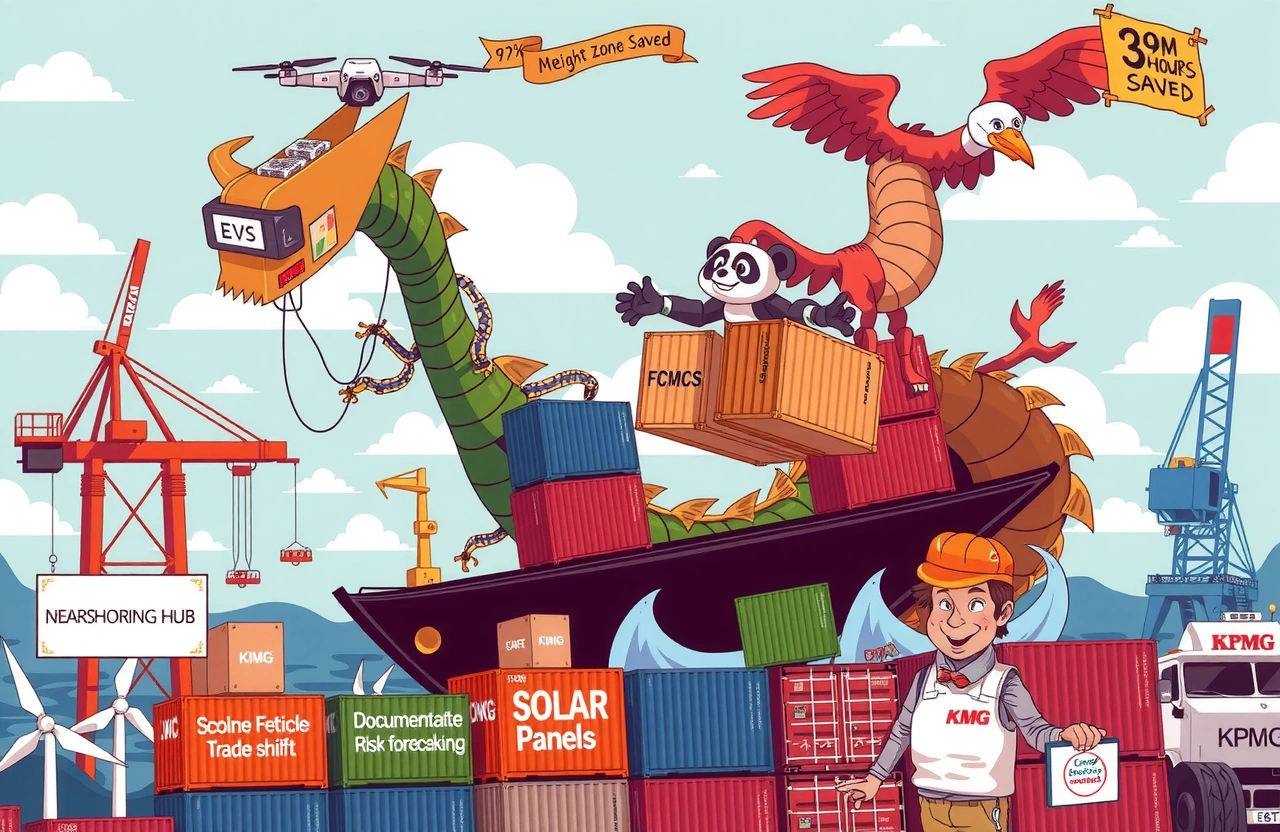The Acceleration of Chinese Export Dominance
Shipping manifests at Shanghai’s Yangshan Port reveal a startling pattern: container volumes surged 15.2% year-over-year in Q1 2024, continuing a record-breaking streak. This export surge isn’t temporary—it’s restructuring international commerce. Analysts attribute the boom to China’s triple advantage: the world’s largest manufacturing ecosystem, rising high-tech production capabilities, and aggressive trade diplomacy. Electric vehicle exports alone jumped 120% last year according to the China Passenger Car Association, exemplified by BYD overtaking Tesla as the top EV producer.
Drivers Behind the Unprecedented Growth
Three factors supercharged this expansion:
– Government subsidies for automation upgrading worth $150 billion
– Supply chain near-shoring within China’s industrial clusters
– Trade corridor developments like the New International Land-Sea Corridor expediting ASEAN shipments
Case in point: Shenzhen’s customs processed 40% more high-value electronics exports in 2023 after robotics investments cut production time by 56%.
Logistics Networks Under Pressure
Global shipping lanes strain under Chinese export volumes, with container freight rates from China to Europe spiking 300% in early 2024. This export surge forces adaptations: Rotterdam Port now handles weekly mega-vessel arrivals carrying over 24,000 containers each. Meanwhile, forwarders like DHL deploy AI routing systems to avoid bottlenecks.
Infrastructure Breakthroughs and Bottlenecks
China completed 10 deep-water port expansions recently to accommodate larger vessels. Yet congestion persists:
– Los Angeles saw average berth wait times increase to 7.5 days
– Hamburg Port launched 24/7 operations to clear backlogs
Operational research from the National University of Singapore suggests blockchain documentation could save 28 million working hours annually.
Strategic Shifts Across Industries
Winning Sectors Riding the Wave
Solar panel manufacturers dominate 80% of global market share, with exports growing 35% annually. Emerging winners include:
– Drone producers like DJI controlling 85% of consumer markets
– Biomedical equipment firms exporting ¥127 billion in advanced scanners
Huawai’s use of Mexican trade zones to bypass tariffs demonstrates creative market entry strategies.
Vulnerable Industries and Mitigation Tactics
Textile manufacturers in Bangladesh report a 16% dip in EU contracts as retailers shift to Chinese suppliers offering end-to-end solutions. Adaptation strategies include:
– European automakers establishing component factories in Belarus
– Vietnam’s CEEC initiative for electronics QA standardization
“Diversification is no longer optional,” notes WTO economist Minxi Qian in her analysis of middle-income manufacturing nations.
Technology Reshaping Supply Chains
LiDAR sensors made in Suzhou reach German auto plants in 19 days through centralized Alibaba logistics hubs—faster than internal EU shipments. This efficiency stems from digital transformation:
Automation Leapfrogging Labor Costs
Guangdong Province factories deployed 850,000 industrial robots in 2023, offsetting rising wages. Cobots operate alongside human workers in Medtronic’s catheter plant, boosting output while maintaining ISO-13485 precision.
Blockchain Integration
Cosco’s blockchain platform slashed customs clearance time in Singapore from 96 hours to 26 minutes. Key implemented technologies include:
– Smart contracts for letters of credit
– RFID tracking systems enabling Netflix-style shipment visibility
Machine learning now predicts supplier risks with 91% accuracy for firms using SINOCEIC data.
Geopolitical Rebalancing Act
As American and European policymakers debate tariffs, southeast Asia emerges as a critical transit zone. Malaysia exported 48% more Chinese-assembled semiconductors in Q1, exploiting tariff differentials. Mexico’s proximity manufacturing zones saw 523 new Chinese factories since 2022. Such rerouting amplifies the export surge while complicating trade analytics.
Nearshoring vs Friendshoring
EU reshoring initiatives recaptured 7% of auto parts production last year, yet China retains decisive advantages:
– Scale capabilities for mega-orders impossible elsewhere
– Vertically integrated rare earth supply chains
Recent Goldman Sachs data reveals Mexican factories still source 68% of inputs from Chinese suppliers.
Strategic Responses for Global Businesses
Simplify your buffers. Nestlé reduced components per product by 37% after mapping their highest-risk Chinese dependencies. Practical adjustments:
– Quadrant mapping suppliers by importance and vulnerability
– Maintain secondary logistics routes – diversify from Long Beach or Felixstowe
– Colonial Pipeline Acquire emerging market sourcing skills. Samsung launched digital trade academies in Kazakhstan to supplement Chinese operations
Crisis-Proofing Tactics
Japanese chemical firm Toray increased inventory buffers for cobalt derivatives while establishing new relationships with Canadian miners. Essential steps:
1. Audit your total China exposure using HHI concentration metrics
2. Reserve specialized shipping capacity annually
3. Digitize end-to-end traceability
Experts at McKinsey calculate firms with dual-sourcing are 5.3x more resilient during disruptions
Global supply lines will permanently bear China’s imprint. The unprecedented export surge forged hyper-efficient pathways that competitors can’t replicate overnight yet warrant prudent risk mitigation. Conduct your supply chain vulnerability assessment this quarter—identify which dependencies are strategic advantages versus critical weaknesses. Forward-looking firms will harness this restructuring to build hybrid networks combining Chinese scale with regional agility.
Action Steps
– Download KPMG’s Supply Chain Resiliency Scorecard template
– Subscribe to Gartner’s monthly China Trade Regulation Watch
– Register for our Summit on June 11: Rewiring Supply Chains in Transforming World
Verify your internal alignment today. Those who adapt proactively will thrive amid this historic realignment of global commerce.



